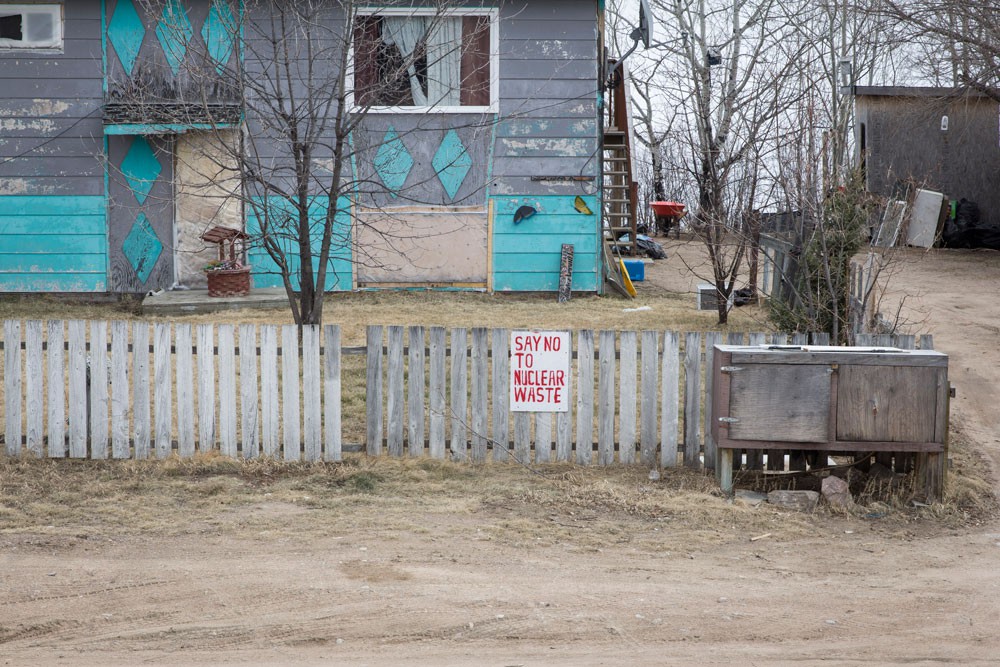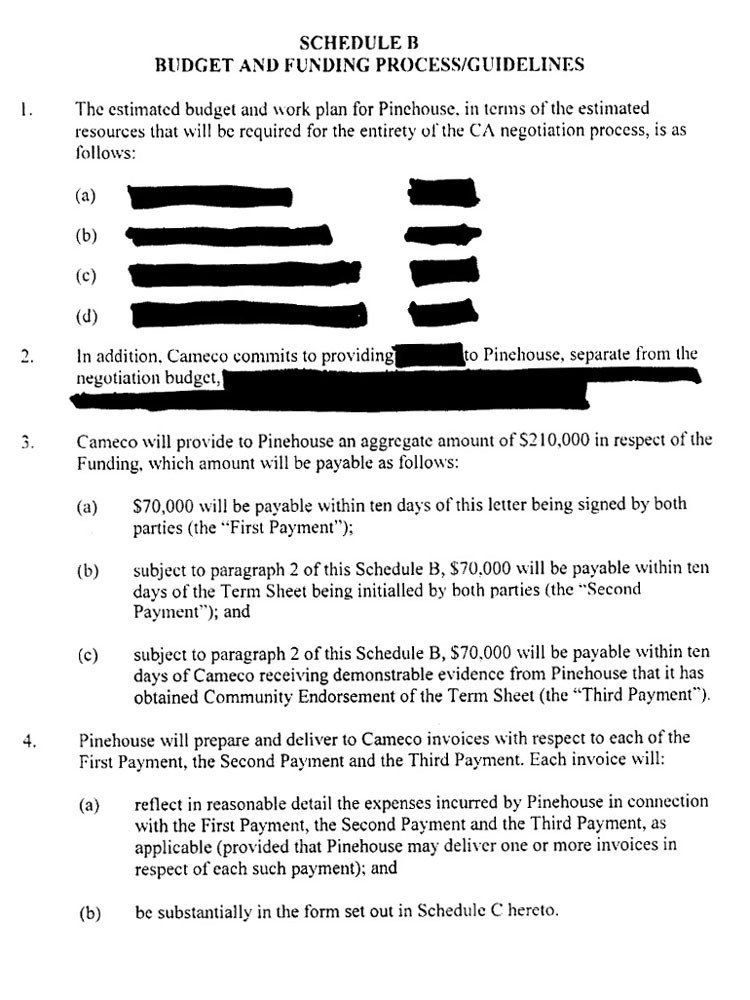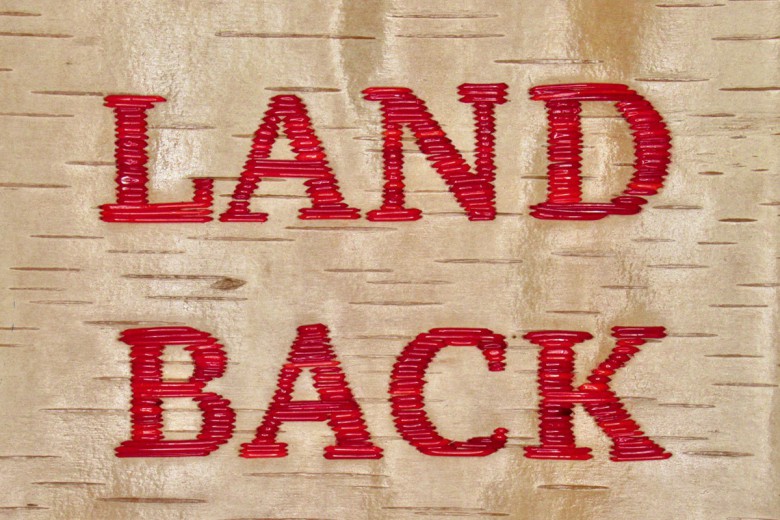
It has now been two and half years since the Northern Village of Pinehouse (population 1,400) and Kineepik Metis Local Inc. signed a collaboration agreement with the uranium mining companies Cameco and Areva in December 2012. But many questions remain about the negotiation process that led up to that agreement and the subsequent flow of money into the community. A protracted Freedom of Information (FOI) request process initiated more than two years ago (April 2013) has finally concluded, with mixed results.
On November 13, 2012 , a seemingly innocuous document was distributed without fanfare at a Pinehouse community meeting. This “Summary of the Collaboration Agreement Term Sheet made among Cameco Corporation, Areva Resources Canada Inc., and Pinehouse” (often referred to simply as the “Term Sheet”) was not so much intended as a matter for community discussion as it was to present a fait accompli. But a few attendees with a critical eye quickly recognized problems with the Term Sheet. Among its objectionable provisions was what amounted to a gag order on Pinehouse residents regarding the social and environmental impact of expansion of the uranium mines north of the community near Key Lake. Despite howls of protest, including pointed interviews on CBC Radio’s As It Happens evening news program, the industry and Village/Kineepik officials proceeded with the agreement.
The collaboration agreement was signed on December 12, 2012 incorporating a few modifications to soften the more offensive terms in the agreement, but the original text was largely left intact. Since its endorsement, roughly $3 million dollars has been paid by industry to the community, which has been distributed by the locally controlled Pinehouse Community Trust Advisory Panel. To date the village hockey arena has received $1.35 million of the funds; over $530,000 has gone to school, pre-school, and post-secondary initiatives; about $160,000 has gone to church and native Elders projects; and $134,000 has been allocated to Kineepik Metis Local Inc. programming. It is hard to imagine anyone in Pinehouse not having been impacted in some way by the largesse. For many, the questions raised back in 2012 about the impropriety and the long-term implications of the collaboration agreement seem to have been forgotten.

And yet, doubts and suspicions remain. It took 10 months (and the threat of court action) to get information from the Pinehouse Village administration concerning payments received from Cameco over the period 2007-2012, during which it was discovered $169,200 went directly from Cameco to Village coffers, including two large payments of $70,000 each in 2012. It was later discovered that an additional payment of $70,000 was subsequently received in 2013. All were related to the collaboration agreement. Until the Freedom of Information requests by Briarpatch were made, no one at Pinehouse, outside of the Village administration, was even aware that these Cameco payments had been received.
The single document received by Briarpatch in this regard was a Letter of Understanding (LOU) signed between Cameco, the Village of Pinehouse, and Kineepik Metis Local Inc. on August 23, 2011. It laid out a framework for the negotiation process, and benchmarked payments to the Village, leading up to the approval of the actual collaboration agreement at the end of 2012. The LOU stipulated that all costs relating to the negotiation of the collaboration agreement would be reimbursed by Cameco. It anticipated that the negotiation process would be completed and an agreement finalized by April 30, 2012. In fact, the timeline was inexplicably delayed by more than seven months. (Sometime in the interim, Areva became party to the negotiations and the agreement. We have not been able to determine just when that happened.)

The LOU indicates that “The parties intend to reach agreement on all material items for the CA [collaboration agreement] and to finalize the Term Sheet accordingly by December 16th, 2011. In order to do so, negotiation meetings in 2011 will, as a minimum, take place every 4-6 weeks at venues agreed upon by the parties.” Furthermore:
“While either party is free to confirm to any third party that CA negotiations are taking or have taken place between the parties, Pinehouse and Cameco intend that the terms and conditions of this agreement … are confidential and may not be disclosed by either party … For the purposes of obtaining Community Endorsement (as defined below), Negotiation Team members from both the Northern Village of Pinehouse and Kineepik Metis Local may communicate to its respective memberships general information about the CA negotiation process and negotiated outcomes.”
Ordinary community members seem not to have been aware of any of these negotiations or their general content until the Term Sheet was distributed at the public meeting on November 13, 2012. This must have been the intended “community endorsement” mentioned within the LOU, which provided the following explanation of how such endorsement would transpire:
“Pinehouse and Cameco intend that after finalizing the Term Sheet and prior to finalizing the CA, Pinehouse will seek endorsement from the membership of both the Northern Village of Pinehouse and Kineepik Metis Local (#9) (‘Community Endorsement’), and will provide sufficient demonstrable evidence to Cameco in due course of Community Endorsement of the agreement reached as encapsulated in the Term Sheet.”
When asked, “When and in what forum did that Community Endorsement happen?” the Village’s lawyer responded by saying, “Our client is not required to answer questions related to the records.” In fact, she indicated that “there are no additional records which are responsive to this request.”
The latter statement is puzzling in that a careful process is laid out in the LOU for invoices and payment for the direct cost of Pinehouse’s legal costs in negotiating the collaboration agreement. Three payments of $70,000 each were required to be invoiced by the Village to Cameco at set benchmarks in the negotiation process.
A curious, but unexplained, clause also appears in the LOU: “In addition, Cameco commits to providing [amount redacted] to Pinehouse, separate from the negotiation budget, [remainder of sentence redacted].” Clearly this payment did not relate to direct costs for negotiation, but what its amount or purpose might have been has been withheld.
The LOU also stipulated that the invoices, amounting to at least $210,000, to be delivered to Cameco would “reflect in reasonable detail the expenses incurred by Pinehouse.” But although requested in the FOI process, the invoices required by the LOU were not provided. In fact, the Village lawyer has stated, “There are no invoices which relate to these matters, and no additional records which relate to these matters. Accordingly, our client declines to provide the particulars requested.” Nor are answers in this regard discernable from the Village’s audited financial statements for 2012, while the 2013 and 2014 financial statements have still not been posted for public scrutiny.
As for getting any further direct documentation from the Village administration, the Mayor and Village Administrator have made it quite clear that they see the requests for information from Briarpatch as frivolous and unworthy of detailed response. In a July 29, 2014 Eagle Feather News interview Mayor Mike Natomagan says, “The things they are asking for are ridiculous. For example they want every email and phone call I have received from Cameco since 2007 … I have trouble finding emails from last week.”
The Briarpatch investigation has revealed aspects of the history leading up to the signing of the Pinehouse collaboration agreement that point to inadequacies in competency, transparency, and accountability on the part of Cameco corporation and the Village administration.
Why are there so few records documenting a huge negotiation process that amounted to at least $210,000 in payments to the Village treasury? Why is it necessary to hide the details of a process that on its surface is meant to benefit the entire community?
Leading up to the finalization of the Collaboration Agreement Term Sheet, the Pinehouse Village election was held in September 2012, an election still under a cloud of serious irregularities. Very few in the community were aware of the negotiations leading up to the agreement, and thus there was no opportunity to raise concerns as part of the election campaign. When the Term Sheet was handed out at a community meeting that November, it came as a complete surprise to those in attendance. There was certainly no opportunity there to discuss its relative merits, and those who did ask questions were given to believe that the collaboration agreement would incorporate concerns and would not be signed until the end of December. Instead, the signing ceremony with officials from the Village, Kineepik Metis Local Inc., Cameco, and Areva was hurriedly arranged for December 12, before protest could gather steam.
As one community leader put it, “It was frenzied; it was rushed.” There was no time to ask questions and get satisfactory answers.
In fact, those raising questions say they have been actively discouraged and rebuffed. Fred Pederson, an Elder in the village who has been strongly critical of the collaboration agreement, complained, “Why is it that whenever any of us ask questions we are always called ‘troublemakers’? We don’t understand why Mayor Mike, who is also president of Kineepik Metis Local and must know the inside story, just refuses to give us taxpayers the details. It makes us really suspicious about how this deal went down.”
The collaboration agreement between the uranium companies and the community of Pinehouse has brought in levels of revenue completely unimagined 10 or 20 years ago. The Village’s total tax revenue in 2012 was just $143,222, less than five percent of the payments received or anticipated from 2013 to 2015 through the collaboration agreement. According to local hotelkeeper John Smerek, “When you’re taking funding from a corporation and trying to include that into a community vision, there’s no independence, no sustainability … It would not be affordable for taxpayers [in Pinehouse] to retain those services being established under the collaboration agreement without depending on the [uranium] industry for ongoing payments.”
It is fair to ask, and at some point Pinehouse residents will need to address, the difficult questions: Whose corporate and financial interests really drive community governance right now? And how will democratic, public decision making in the village contend with the uncertain stream of resource dollars in the future? The lack of independence and sustainability that worries Smerek could prove troublesome in the years ahead.






